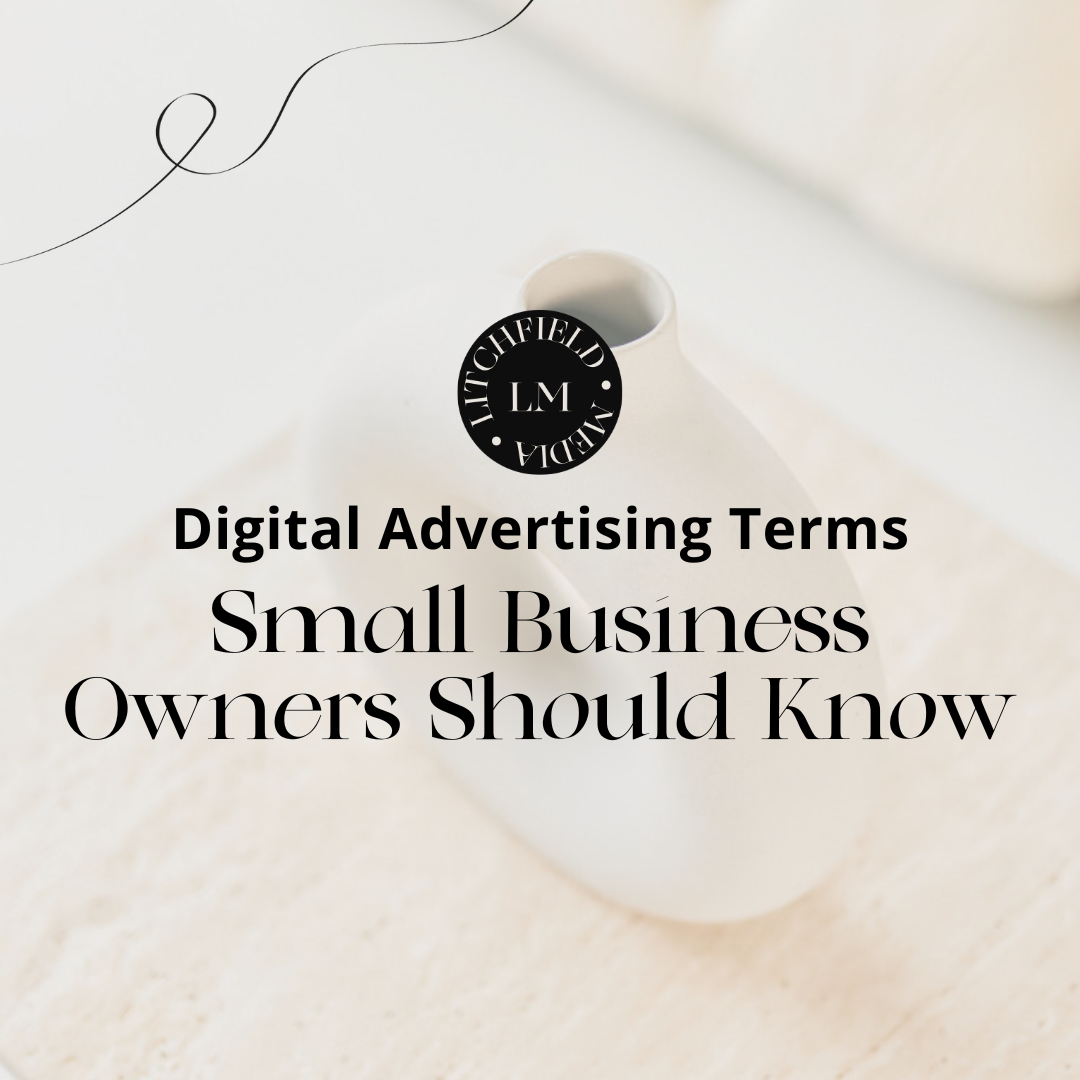Digital advertising. For many small business owners, it’s a black hole they don’t want to dig too deep into. But this has been my life for the past 9 years. And I love it!
If you sell a digital product, online course, done-for-you service, or group program, and you’re already running ads or planning to, here are a few advertising terms you need to know. Plus, some of my top tips to improve them.
CTR (Click Thru Rate)
In terms of digital advertising, the CTR or click-through rate is the percentage of people who viewed the ad and clicked. This does not refer to the landing page to use but rather clicks that expand the ad copy to read more or clicks to play video ads.
To calculate your ad click-through rate, you divide the number of total ad views or impressions by the total number of clicks. For example, 10 ad views divided by 500 impressions (multiplied by 100) is a CTR of 2% and is the average CTR when marketing to cold traffic.
The average email CTR is approximately 2% of subscribers who open the email and click the link, but this could be much higher with an engaged, warm audience.
What Your CTR Tells You
At the very least, an average or better-than-average CTR tells you that your targeting is working, the ad creative and your emails are getting openers to click. If you have poor or low CTR numbers, this means it’s time to reevaluate these elements and test again.
Ad Link CTR (Link Click Thru Rate)
The Link CTR in Meta Ads Manager is the percentage of people that see the ad and follow the link to the landing page. Unlike the standard CTR, this is a more complex action on the part of the viewer that communicates a greater level of interest in your offer.
To calculate your Link CTR, divide the number of click-throughs to the landing page by the total number of impressions. This number should be roughly half of what your CTR was. If your 500 impressions get 10 ad clicks, you should see at least 5 Link CTR – a rate of 1%.
What Your Link CTR Tells You
This metric communicates a deeper connection to your message and expresses intention-based action. If your link CTR is low, you need to reevaluate your ad copy and your call to action.
ROAS (Return On Ad Spend)
Every campaign has a ROAS. For every dollar you spend on ads, the ROAS indicates how much money you will get in return. A 5x ROAS means for every $1 in ads, $5 was the revenue generated. To calculate this you will need to take your total revenue and divide it by your total ad spend.
This translates to new clients and more course sales specifically generated by this campaign.
In a recent live launch we ran for a client, we generated a 7X ROAS. For every $1 spent, the client got $7 back.
What Your ROAS Tells You
If your ROAS is low or only 1X (breaking even), this means you need to reevaluate your offer. Your audience is showing up, but they’re not buying. You need to adjust your offer so they feel silly saying “no.”
Conversion Rates
A conversion rate can be calculated from an e-commerce store, an opt-in page, a landing page, or a sales page from paid or organic traffic. Whether you’re selling physical products, digital products, a course, or a membership, your conversion rate tells you how much money you made or leads you collected based on the number of visitors to your page.
To calculate your conversion rate, divide the total number of conversions by the total amount of site visitors or page viewers to that particular offer. For example, a sales page or product with 1,000 views and 10 buyers is a 1% conversion rate.
Recommended Conversion Rates
From end to end, the different parts of your funnel will convert at different rates. Each benchmark is speaking to the audience at different stages of the customer journey and will hit differently.
- On average, e-commerce stores should convert at 2% or higher.
- Cold traffic to a free item or opt-in should convert at 30% or higher.
- Sales pages should get a 1-3% conversion rate for cold traffic.
When transitioning a live launch offer into an evergreen offer, lots of testing is needed to capture as much information as possible and make adjustments where needed before fully activating the passive income stream.
In our 10X ROAS Case Study, one client was getting evergreen-ready, and we were able to build, launch, and test all of her sales funnel metrics. Here’s where her rates landed:
- Freebie Landing Page Conversion: 21%
- Paid Challenge Landing Page Conversion: 6.3%
- Sales Page Conversion: 3.89%
What Your Conversion Rate Tells You
If your conversion rate is low and you have already optimized for better metrics elsewhere (CTR, link CTR, etc.), there are still some adjustments needed.
For a sales page, tweak the messaging and sweeten the pot with an offer stack. Make sure you have social proof, and try incorporating video. Consider changing how you present the big promise of your offer at some point on your sales page.
For a landing page, get really clear on what they get out of this resource and add an about me section and any press features for authority building. For an e-commerce store, test different imagery, descriptions, and price points.
Check Your Stats
Fire up your ad account and take a look. How are you doing? Where are the holes that need to be plugged? What is working and needs more ad spend to back it up?
If that idea makes your brain explode, I gotch’you! My team at Litchfield Media offers done-for-you ad management services, or you can talk 1:1 strategy consulting with me. Book a call HERE, and let’s see what you need!
